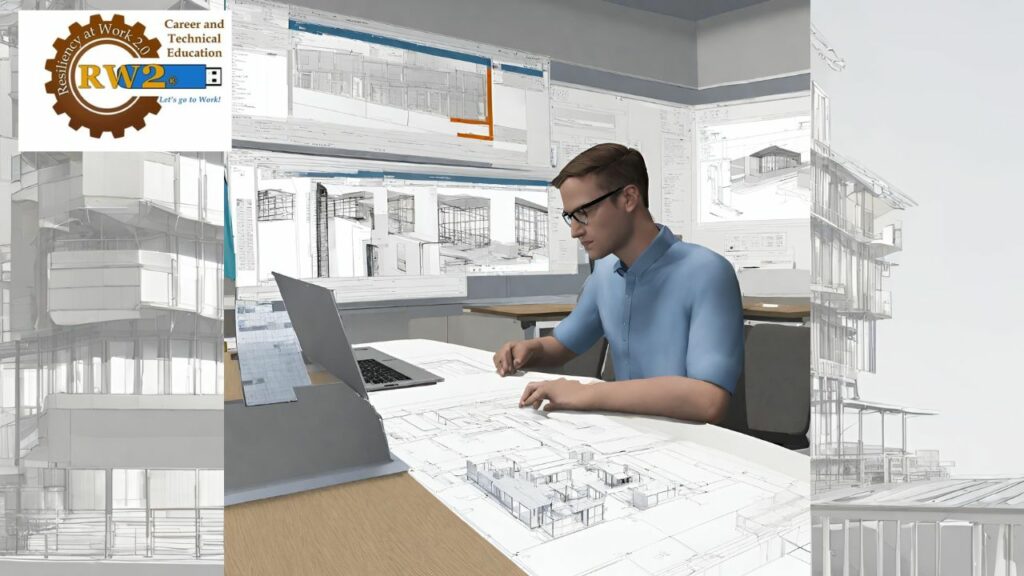
Are you interested in architecture but unsure of where to start? Look no further, because learning Revit, a leading building information modeling (BIM) software, could be the key to achieving your career goals.
In today’s competitive job market, having a diverse set of skills and knowledge is crucial, especially in the architecture industry. With the rise of BIM, Revit has become an essential tool for architects and other professionals involved in the design and construction process.
This advanced software allows for more efficient collaboration and communication between team members, as well as streamlining the entire building process from initial design to final construction. Learning Revit can open up new job opportunities and help you stand out in a crowded job market. So why is learning Revit important? Let’s dive into the world of building information modeling and discover its significance in architecture.
Understanding Revit and Building Information Modeling
Revit enables architecture, engineering, and construction professionals to plan, design, construct, and manage buildings and infrastructure more efficiently through an intelligent 3D model-based process.
Unlike traditional drafting methods, Revit allows users to create unified models where changes made in one view are updated in real time across all views and project documents.
This dynamic feature not only eliminates the tedious task of manual updates but also significantly reduces the margin for error, ensuring a higher level of accuracy throughout the project lifecycle.
Building Information Modeling goes beyond just the design phase; it encompasses building geometry, spatial relationships, geographic information, as well as the quantities and properties of building components.
Professionals can predict performance outcomes, such as energy consumption and life-cycle costs, early in the design process using Revit for BIM. This not only aids in creating more sustainable and efficient buildings but also fosters a collaborative environment where architects, engineers, and construction teams can work together seamlessly, sharing data and insights that lead to informed decision-making and, ultimately, higher-quality projects.
Bridging the Skill Gap in a Degree-Centric World
In a society where a college degree often serves as the threshold for career opportunities, individuals without such credentials might feel at a disadvantage.
However, the realm of building information modeling (BIM), particularly through learning Revit, presents a unique avenue for non-degree holders to bridge this gap. By acquiring specialized knowledge and skills in a high-demand area, individuals can significantly enhance their marketability to potential employers.
The architecture, engineering, and construction industries are increasingly reliant on BIM technologies for their projects. This reliance creates a niche for skilled Revit users, regardless of their formal educational background.
Proficiency in Revit software provides access to positions that historically required a degree, showcasing essential, sought-after skills that are critical for contemporary project completion. This shift towards skill-based hiring is gradually leveling the playing field, allowing passionate individuals to pursue successful careers in architectural design and construction without the conventional degree path.
Embracing the opportunity to learn Revit and understand BIM can thus be a strategic move for those seeking to navigate the degree-centric barriers of the job market.
The Growing Demand for BIM Experts
The demand for professionals skilled in Building Information Modeling (BIM) has seen a remarkable increase, a trend that reflects the evolving landscape of the architecture, engineering, and construction industries.
Recent statistics indicate a significant shift, with a projected growth rate of 14% in the BIM sector by 2027, underscoring the industry’s rapid embrace of digital transformation. This surge is partly due to governmental mandates in various countries requiring BIM competence for public infrastructure projects, further fueling the need for experts proficient in Revit, the leading software in BIM.
Employers are actively seeking individuals who can navigate the complexities of Revit, with job postings specifying BIM expertise doubling over the past five years.
This uptick is not just in traditional architecture and construction roles but also in emerging positions focusing on sustainability and green building projects, where BIM’s capabilities in modeling energy efficiencies and lifecycle assessments are invaluable.
As industries continue to prioritize innovation and efficiency, proficiency in BIM, particularly through Revit, has transitioned from a desirable skill to an essential qualification. The growing demand for BIM experts highlights a dynamic shift towards more collaborative, sustainable, and efficient building practices, making now an opportune time for individuals looking to carve out a career in this cutting-edge field.
How to Start Learning Revit and Building Information Modeling
Embarking on your journey to mastering Revit and Building Information Modeling begins with finding the right educational resource that matches your learning style and goals.
RW2 offers comprehensive classes in Revit for Building Information Modeling (BIM), designed to equip you with a solid foundation in 3D design and modeling using the Autodesk Revit software program. You will be career-ready in just 15 weeks.
In our program, you’ll engage in hands-on projects, such as designing a lake cabin or a multi-story commercial building, to hone your skills in creating detailed models and drawings. You’ll learn to manipulate basic sketching and modifying tools, link CAD and Revit files for project starts, and develop levels for a model.
Additionally, our curriculum covers the creation of various building components, including floors, ceilings, roofs, stairs, and ramps. Beyond the technical skills, RW2 also emphasizes the importance of soft skills like time management, business ethics, and workplace respect, ensuring you’re well-prepared for the professional world.
By the end of the program, you’ll not only be able to create comprehensive 3D building models, but you’ll also have a portfolio of your work to aid in your career search, positioning you for success in various BIM job roles such as VDC, Revit, or BIM Technician.
The Path Forward: Turning Skills into Success
Navigating the journey from learning to leveraging your Revit and Building Information Modeling (BIM) skills is an exhilarating transition. As you gain proficiency, you’ll find yourself at a unique crossroads where potential meets opportunity.
Harnessing these skills is your ticket to not just participating in the future of architecture and construction but actively shaping it. The practical knowledge of Revit positions you as an invaluable asset to any team, enabling you to contribute to projects with confidence, innovation, and efficiency.
Turning your new-found skills into success involves networking with professionals, continuously updating your knowledge base, and showcasing your capabilities through impactful projects. Demonstrating your skills can open doors to fulfilling roles in the industry, initiating a successful career path that was once deemed unattainable.
Are you ready to embark on this promising career path? Explore the RW2 website and pre-register for a Revit for BIM class.. We’re offering the first two weeks of classes with no obligation, providing you with a risk-free opportunity to start mastering the skills that will define your future.
Don’t let this chance slip through your fingers. With RW2, you can dive into the world of Revit and BIM with RW2 and turn your potential into professional success.



